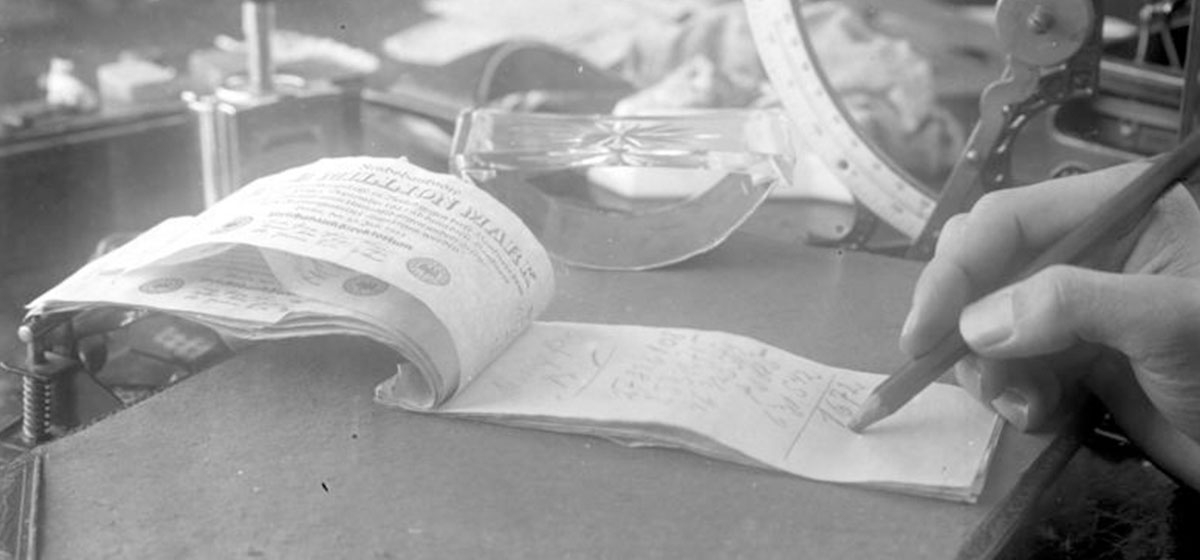The Instability of Europe

Between the first and second world wars, most of the European governments—Britain and, to a lesser extent, France, being exceptions—lived lives that were, to paraphrase Hobbes, weak, unstable, and short.
The Weimar Republic in Germany faced existential issues from the beginning. Germany had been humiliated in World War I. It had been burdened with impossibly large reparations obligations, the Republic was under constant violent attack from both the radical left and right, and the powerful German aristocracy, whose support might have been decisive, withheld that support, viewing democracy as mob rule. And we need to keep in mind that Germany had only been cobbled together by Bismarck half a century earlier—Weimar was the country’s first experience of democracy.
When most of us think about Weimar we remember the explosive inflation of the early 1920s, at the end of which one U.S. dollar was worth over four billion German marks. But, remarkably, Weimar survived hyperinflation, only to be done in by the Great Depression, which hit Germany very hard. By 1930 Germany couldn’t be governed without the participation of the National Socialist Party, and by 1932 the Nazis were the largest party in the Reichstag. Hitler became chancellor in 1933 as the result of a populist revolt against the chaos of Weimer, and Germany’s democracy was on its way to the dustbin of history.
The Kingdom of Italy arose in the mid-19th century as a constitutional monarchy, but the democracy that coexisted with the monarch was weak, despotic, and corrupt from the beginning. Government after government rose and fell with a dizzying frequency that continues to characterize Italy to this day. Defeat at the hands of (seriously) Ethiopia and a disastrous World War I brought the so-called “liberal” period to an abrupt end. (Technically, Italy fought on the winning side in the First World War, but it lost hundreds of thousands of lives and gained virtually nothing.) Mussolini rode into office in 1922 on a wave of populist anger with the inability of the constitutional government to govern, and Italy would not see democracy again until 1946.
In Spain, a republic had existed briefly in the late 19th century, but was put to rest by the Bourbon restoration in 1874. The Second Republic, the one that fought the civil war against Franco and his rebels, was established during the Great Depression and was too weak to stem economic decline and the resulting social disorder that led to the Falangist coup and the ultimate victory by Franco’s forces.
The Second Republic has been rather romanticized in the west, as it was supported by much of the left-leaning cultural aristocracy that prevailed at the time. In fact, however, there wasn’t much to the Republic. The new constitution came into effect in December 1931, and chaos reigned for the brief four years and seven months until the coup that launched the civil war. The Republic had barely been born before its existence was marred by a long series of church burnings, political assassinations, nationwide strikes and periodic mob actions.
The socialist government that swept into power in 1931 with the abdication of King Alphonso XIII was voted out two years later, when voters lurched back to the right. That led several regions of the country to rebel, but those rebellions, in Asturias and Catalonia, were brutally crushed by the Spanish army, led by Franco. Then, in 1936 the left was narrowly voted back in—in the form of the Popular Front—but the Falangist coup occurred a mere six months later. The civil war would last another three years, but the Republic had already ceased to exist in all but name.
For the last three years of the Second Republic’s four and a half year life the country was in reality governed by, on the one hand, revolutionary socialists and anarchists, and, on the other, by the rightwing Falange Party. With Spain lurching from crisis to crisis it was hardly a wonder that populist outrage would back even a tyrant like Franco, who at least promised stability.
Although Portugal wasn’t as consequential a power as Germany, Italy and Spain, its democracy faced similar problems of weakness and instability. Between 1910 and 1926, Portugal suffered through no fewer than 45(!) governments. This chaos finally came to an end with the coup that installed Salazar in 1933. Say what you will about strongmen like Salazar and Franco, but they offered much longed-for stability to their people. Both men governed for 36 years (Salazar from 1932-1968 and Franco from 1939-1975) and they were followed by peaceful democracies.
The socialist governments of Germany, Italy and Spain between the wars harbored ambitious and in many ways attractive aspirations for their people. They represented, in the main, groups of citizens—especially peasants and laborers—whose interests had long been ignored. They offered suffrage to women and, at least in some cases, civil liberties that had been unheard of before they came to power.
But as noted last week, good intentions aren’t enough. The republics of Germany, Italy and Spain (as well as Portugal) failed to offer their citizens peace, stability and protection from radical subversive elements on the left and right. They were unable even to preserve the integrity of their own borders. Most remarkable of all, they weren’t much interested in providing basic services, as we’ll see next week.
Next up: On Populism, Part III





